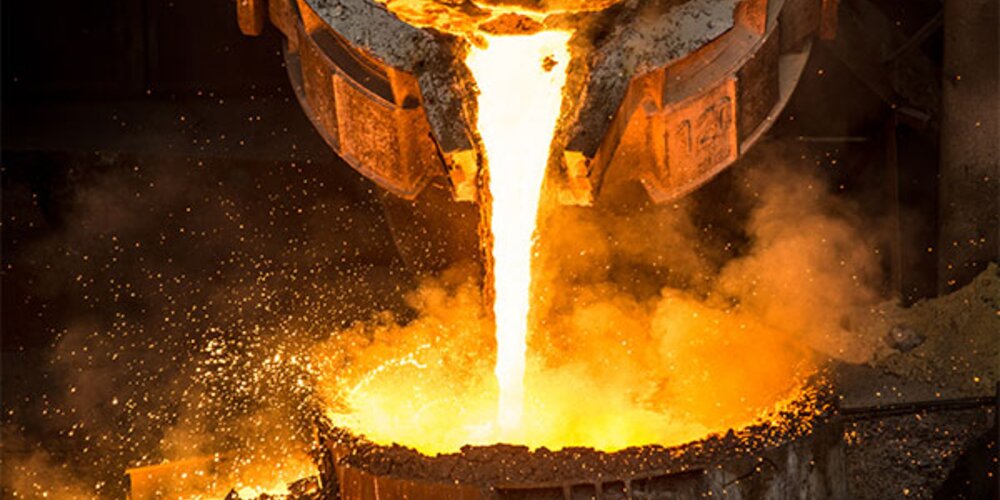New Treatment Could See Steel Alloys Become Both Stronger and More Flexible

When it comes to creating a usable steel, the characteristics of strength and flexibility must be balanced. A change in one characteristic, has a concomitant effect on the other characteristic. But, a new treatment developed by Purdue University and Sandia National Labs could potentially make steel stronger and more ductile at the same time.
Whilst steel (and other metals) may look like monolithic solid materials to the naked eye, when subjected to analysis by microscope they are revealed to be a combination of individual crystals called grains. These grains vary in size, with larger grains able to accommodate greater strain than smaller grains.
As a result, engineers and others have long been faced with a dilemma when designing assets; use either large-grain metals which are deformable, or small-grain metals that are strong, but not very ductile.
Now, however, this fixed trade off may no longer be required.
The team behind the development treated a steel alloy known as T-91 to produce a new material; G-T91. Also called Gradient T-91, G-T91 has a gradient of grain sizes throughout.
The treatment forms a layer of ultra-fine metal grains from the surface down to about 200 micrometres into the material. The grains on the outside measure less than 100 nanometres long, while those in the centre are up to 100 times larger. The researchers dubbed this layer of grains a ‘nanolaminate’.
Because of this nanolaminate of grains of varying gradients, G-T91 has a yield strength of about 700 megapascals and withstood a uniform strain of about 10% - a significant improvement over the combined strength and plasticity that can be reached with standard T-91.
Potential applications of G-T91 include any context where strong yet ductile steel would be beneficial, such as car axles, suspension cables, and other structural components.
Commenting on the treatment and the findings of the tests, Xinghang Zhang, professor in the School of Materials Engineering at Purdue, said:
“This is the beauty of the structure; the centre is soft, so it can sustain plasticity but, by introducing the nanolaminate, the surface has become much harder. If you then create this gradient, with the large grains in the centre and nanograins in the surface, they deform synergistically.
The large grains take care of the stretching, and the small grains accommodate the stress. And now, you can make a material that has a combination of strength and ductility”.
The Purdue Research Foundation Office of Technology Commercialisation, has since applied for - and received - a patent to protect the intellectual property associated with this discovery.
In need of materials testing support?
Do you have a material that requires identification? Perhaps you’re involved with a dispute over the failure of a material? Maybe you need to test a material for properties such as hardness or ductility?
No matter what materials-based challenge you’re facing, The Lab can almost certainly help. Our team of material scientists and metallurgical experts are able to carry out a broad range of investigations using advanced digital microscopy, scanning electron microscopy (SEM) and more.
Find out more about The Lab’s materials testing services now
For more materials science, materials testing and inspection news and insights, explore The Lab’s News and Knowledge Hub…
Is It Possible to Create Carbon-Neutral Steel? | Is Carbon Neutral Concrete on the Horizon? | New 3D Printing Technique Developed to Print One of the World’s Toughest Steels
- Author
- Dr Holly Edwards
- Date
- 08/06/2023
